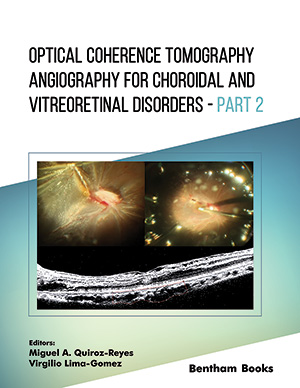Abstract
Human herpes viruses cause significant morbidity in patients with the acquired immunodeficiency syndrome. Even after the introduction of highly active anti-retroviral therapy (HAART), herpes viruses remain the leading causes of blindness in AIDS patients. Cytomegalovirus (CMV) retinitis and the closely-related immune reconstitution uveitis syndrome are the most common causes of blindness, but progressive outer retinal necrosis and acute retinal necrosis due to varicella zoster and herpes simplex are also important causes of vision loss. Successful treatment of these conditions requires an aggressive approach with multi-drug intravenous therapy or repeated intravitreal antiviral injections. Since the rate of retinal detachment is alarmingly high despite successful antiviral therapy, internists and ophthalmologists must work closely together to recognize and treat complications as they arise. Fortunately, Epstein-Barr virus is a rare cause of retinal infection and human herpes virus (HHV)-6, HHV-7, and HHV-8 do not appear to be primary pathogens. However, increasing evidence suggests that HHV-6 and HHV-7 play important roles in modulating the immune system and potentiating infection by CMV.
Keywords: Acute retinal necrosis, cytomegalovirus, epstein barr virus, herpes simplex, progressive outer retinal necrosis, varicella zoster virus.
Current HIV Research
Title:Herpetic (Non-Cytomegalovirus) Retinal Infections in Patients with the Acquired Immunodeficiency Syndrome
Volume: 11 Issue: 3
Author(s): Michael W. Stewart
Affiliation:
Keywords: Acute retinal necrosis, cytomegalovirus, epstein barr virus, herpes simplex, progressive outer retinal necrosis, varicella zoster virus.
Abstract: Human herpes viruses cause significant morbidity in patients with the acquired immunodeficiency syndrome. Even after the introduction of highly active anti-retroviral therapy (HAART), herpes viruses remain the leading causes of blindness in AIDS patients. Cytomegalovirus (CMV) retinitis and the closely-related immune reconstitution uveitis syndrome are the most common causes of blindness, but progressive outer retinal necrosis and acute retinal necrosis due to varicella zoster and herpes simplex are also important causes of vision loss. Successful treatment of these conditions requires an aggressive approach with multi-drug intravenous therapy or repeated intravitreal antiviral injections. Since the rate of retinal detachment is alarmingly high despite successful antiviral therapy, internists and ophthalmologists must work closely together to recognize and treat complications as they arise. Fortunately, Epstein-Barr virus is a rare cause of retinal infection and human herpes virus (HHV)-6, HHV-7, and HHV-8 do not appear to be primary pathogens. However, increasing evidence suggests that HHV-6 and HHV-7 play important roles in modulating the immune system and potentiating infection by CMV.
Export Options
About this article
Cite this article as:
Stewart W. Michael, Herpetic (Non-Cytomegalovirus) Retinal Infections in Patients with the Acquired Immunodeficiency Syndrome, Current HIV Research 2013; 11 (3) . https://dx.doi.org/10.2174/1570162X11311030005
| DOI https://dx.doi.org/10.2174/1570162X11311030005 |
Print ISSN 1570-162X |
| Publisher Name Bentham Science Publisher |
Online ISSN 1873-4251 |
Call for Papers in Thematic Issues
Management of HIV: Management of HIV: old challenges and new needs
The aim of this thematic issue is to provide the most recent updates regarding the effective management of HIV infection. Antiretroviral therapy (ART) has significantly decreased HIV-related mortality, leading to an enhancement in the quality of life and life expectancy for people living with HIV (PLWH). Despite the numerous advancements ...read more
 41
41
- Author Guidelines
- Graphical Abstracts
- Fabricating and Stating False Information
- Research Misconduct
- Post Publication Discussions and Corrections
- Publishing Ethics and Rectitude
- Increase Visibility of Your Article
- Archiving Policies
- Peer Review Workflow
- Order Your Article Before Print
- Promote Your Article
- Manuscript Transfer Facility
- Editorial Policies
- Allegations from Whistleblowers
Related Articles
-
Molecular Mechanisms of Diabetic Nephropathy and Its Therapeutic Intervention
Current Drug Targets Phytoestrogens and Mitochondrial Biogenesis in Breast Cancer. Influence of Estrogen Receptors Ratio
Current Pharmaceutical Design Neurosarcoidosis
Current Neuropharmacology High Sensitivity Troponin in Cardiovascular Disease. Is There More Than a Marker of Myocardial Death?
Current Topics in Medicinal Chemistry Impaired Clearance of Neutrophils Extracellular Trap (NET) May Induce Detrimental Tissular Effect
Recent Patents on Endocrine, Metabolic & Immune Drug Discovery Angiogenesis as Risk Factor for Plaque Vulnerability
Current Pharmaceutical Design Practical Approach to Children Presenting with Eosinophila and Hypereosinophilia
Current Pediatric Reviews Clinical Significance of Pleiotropic Effects of Statins: Lipid Reduction and Beyond
Current Medicinal Chemistry Mesenchymal Stem Cells: Key Actors in Tumor Niche
Current Stem Cell Research & Therapy Nitric Oxide Homeostasis in Neurodegenerative Diseases
Current Alzheimer Research The Use of Sensory Nerve Stimulation and Compression Bandaging to Improve Sensory Nerve Function and Healing of Chronic Venous Leg Ulcers
Current Aging Science Targeting Potassium Channels: New Advances in Cardiovascular Therapy
Recent Patents on Cardiovascular Drug Discovery Human Papilloma Virus Vaccine Associated Uveitis
Current Drug Safety Melatonin Role in Experimental Arthritis
Current Drug Targets - Immune, Endocrine & Metabolic Disorders Catatonia Due to a General Medical Condition (Organic Catatonia)
Current Psychiatry Reviews Human Endogenous Retroviruses in Multiple Sclerosis: Potential for Novel Neuro-Pharmacological Research
Current Neuropharmacology Focus on the Multimodal Role of Biomarkers in Breast Cancer
Current Pharmaceutical Design Rheumatic Manifestations in Malignancy
Current Rheumatology Reviews The Challenges of Modeling Drug Resistance to Antiangiogenic Therapy
Current Drug Targets Editorial (Thematic Issue: The Thoracic Space: An Amazing Pandora’s Box!)
Current Respiratory Medicine Reviews























